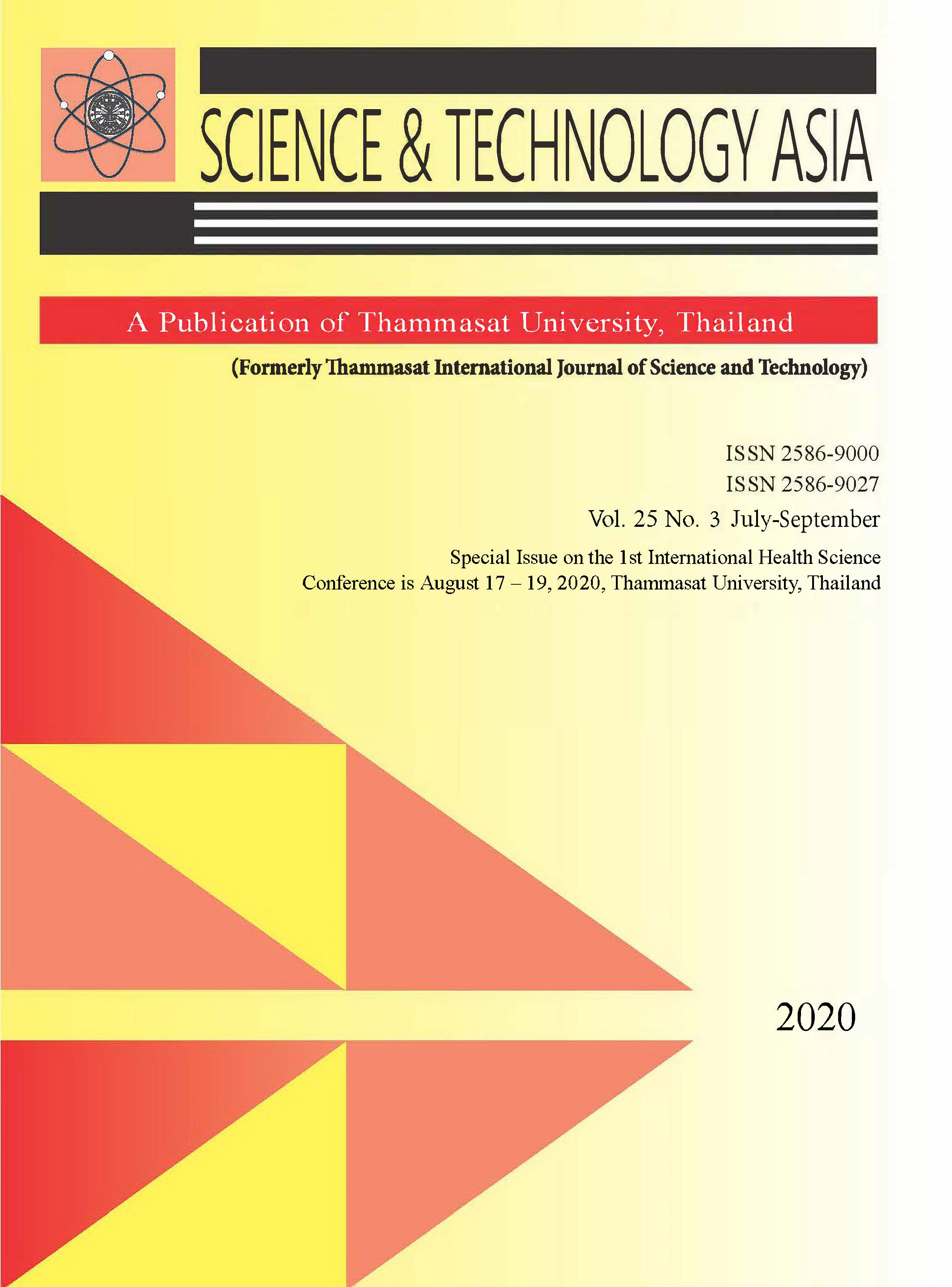Correlation of the Standard Deviation of Urinary Stone Density by Non-Contrast Computed Tomography and the Shock Wave Lithotripsy Outcomes
Main Article Content
Abstract
The extracorporeal shock wave lithotripsy (ESWL) is the first line treatment for stone smaller than 20 mm. Many parameters which are measured from medical images have been widely studied as a predictor of ESWL outcomes. This study aims to determine the utility of standard deviation (SD) of stone density or stone heterogeneity index (SHI) from Non-Contrast Computed Tomography (NCCT) for predicting the outcomes of ESWL. This retrospective study included 61 patients with 71 stones smaller than 20 mm, who had preoperative NCCT and ESWL session at Thammasat University Hospital between January 2010 and November 2017. The stone size, mean and SD of stone density were recorded. All stones were assigned to two groups, low and high SHI, using mean value of measured SD. The success rate of ESWL outcomes of these two groups were compared. The success ESWL outcome in the stone with high SHI was significantly higher than in stones with low SHI. The univariate logistic regression model showed that stone size and SHI were associated with successful outcome (OR=0.939, 95% CI 0.847 to 1.041, p-value=0.23 and OR=2.940, 95% CI 1.113 to 7.771, p-value=0.03 respectively). The multivariate logistic regression model revealed that they have no independent impact on the successful outcome. In conclusions, stone with high SHI may suggested higher success rate of ESWL especially in a small stone size (smaller than 10 mm) and regardless of the mean stone density.


